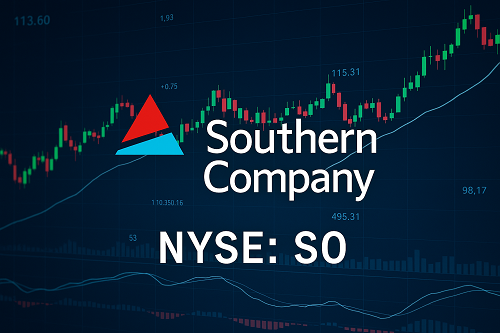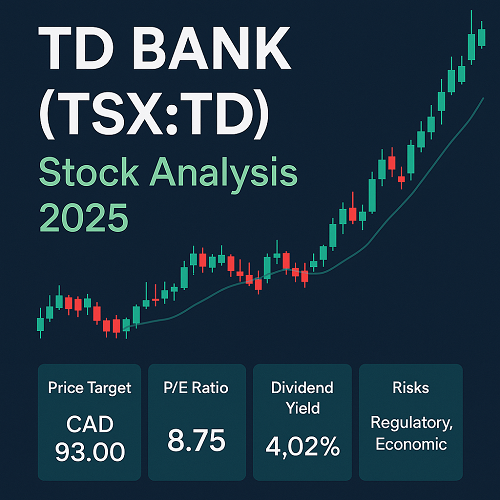Southern Company (NYSE: SO) is one of the major U.S. regulated electric utilities, with a stable business model, attractive dividend yield, and exposure to long-term structural themes (electrification, data centre demand, energy transition). At the same time, its valuation appears largely priced in, and the regulatory environment, cost pressures, and capital intensity pose risks. Analysing SO in 2025, the stock offers moderate upside but also limited margin for error. The consensus is a “Hold” rating with modest projected upside.
Company Overview & Business Model
Southern Company, headquartered in Atlanta, Georgia, is a large U.S. utility operating through multiple regulated subsidiaries. Key facts:
- The company serves customers across six states through its electric and gas operations.
- Its regulated model yields predictable cash flows, as utilities recover costs through rate cases and enjoy stable demand.
- Historically, utilities like SO invest heavily in infrastructure (generation, transmission, distribution) and in return are granted a regulated rate of return by state regulators.
The regulated model is a double-edged sword: stable but capped growth. For SO to deliver above-average returns, it must leverage structural change and regulatory approvals.
Industry Landscape: Regulated Utilities in Transition
The utility sector is undergoing transformation:
- Electrification & data centre growth: As data centres proliferate and electrification of transport/heating advances, electricity demand is growing. SO reported first-quarter kilowatt-hour sales growth of 4.2 %, and a notable 11% rise in usage by existing data centres.
- Energy transition: Utilities are challenged by decarbonisation goals, renewable energy integration, grid modernisation, and sometimes nuclear new builds. E.g., SO’s CEO noted the U.S. will need >10 GW of new large nuclear capacity in coming years.
- Regulatory & cost pressures: Rising interest rates, inflation, supply-chain issues, and higher fuel/commodity costs weigh on utility margins and rate cases.
For SO, the intersection of regulated stability and structural growth gives opportunity, but also complexity.
Financial Performance & Metrics
Revenue, Earnings, Margins
The recent quarterly data shows improvement: In Q1 2025, revenue rose 17% year-over-year to ~$7.78 billion, driven by higher retail electricity demand. However, we must examine margins: operating expenses rose from ~$4.9 b to ~$5.8 b, interest expense increased ~7.3%. That inflationary pressure is notable.
Balance Sheet & Cash Flow
Regulated utilities typically carry substantial debt due to infrastructure investments. SO’s ability to manage debt, keep interest expense under control, and maintain FFO-to-debt ratios will be critical. Market commentary points to funds from operations (FFO) to debt of ~15.3% currently, with management targeting ~17%. A strong ratio by utility standards strengthens credit quality and lowers risk.
Dividend & Yield Profile
Utilities are often income plays. SO has delivered consistent dividends and increased its payout for over two decades. For investors seeking yield plus modest growth, SO is attractive. But one must assess sustainability: payout ratio, regulatory environment, and growth cap.
Valuation & Analyst Consensus
Analyst targets and consensus provide context:
- According to MarketBeat, the consensus 12-month price target is ~$98.83, representing only ~1.06% upside from ~$97.80 price.
- TipRanks lists an average target ~$101.59, ~3.9% upside.
- Zacks shows the range from $78 to $114, average ~$99.44, essentially flat from current.
In sum: the market values SO at little upside, consistent with a Hold rating. From a valuation standpoint, the low upside suggests limited reward relative to risk — a key element for the investment thesis.
Growth Drivers & Strategic Initiatives
A. Demand Growth – Data Centres, Electrification
SO is positioned to benefit from secular growth in electricity usage:
- Data centres increasingly consume large amounts of power; SO reported 11% rise in data centre usage in Q1.
- Electrification of heating, EVs, and industrial loads provides tailwinds.
- Migration and manufacturing growth in the South U.S. (states SO serves) support load growth.
B. Energy Transition & Nuclear
- SO’s leadership highlights the role of large-scale nuclear and small modular reactors in the future grid.
- Renewables and grid modernisation: Regulated utilities must adapt to distributed generation, storage, and ESG/regulatory mandates.
- Infrastructure investment: Transmission/distribution upgrades, smart grid, grid resilience. These investments can support long-term regulated returns if approved.
C. Regulatory & Rate Case Opportunities
As SO proposes investments, successful rate cases (where regulators allow cost recovery plus return) drive earnings growth. The ability to secure favourable regulatory treatment is therefore a key lever.
Risks & Headwinds
Even with positive structural drivers, SO faces significant risks:
- Regulation: Slower approvals, adverse rate decisions, or cost caps reduce returns.
- Cost inflation & interest rates: Utilities are capital-intensive; rising rates increase capital costs and interest expense, squeezing margins.
- Load growth uncertainty: While data centre and electrification growth are promising, they may not fully materialise or may be offset by energy efficiency gains or regulatory/competitive pressures.
- Energy transition complexity: Managing the shift to renewables, nuclear, grid modernisation entails risk of cost overruns, delays, or stranded assets.
- Valuation risk: With modest upside already priced in, any negative surprises (e.g., regulatory setbacks) could yield downside.
- Macro risks: Economic slowdown, inflation, or policy changes (e.g., lower subsidies) can impact demand, rate cases or capital plans.
Technical & Trading Outlook
From a trading and technical perspective:
- SO has shown resilience, hitting new highs recently and outperforming peers on some trading days.
- Some technical commentary indicates SO achieved a high “composite rating” (96) in May 2025, placing it among top-performing stocks in certain models.
- Nonetheless, given the low upside in analyst valuation and regulatory risk, the technical upside may be constrained unless a catalyst emerges (e.g., major regulatory win, load-growth surprise, nuclear breakthrough).
Trading Strategy Implications
For traders:
- A breakout above previous highs (with volume) could signal momentum, but risk management is key given limited reward.
- For investors: Given limited upside and stable dividend, SO may suit income-oriented portfolios rather than high-growth portfolios.
- Entry point: Consider current yield versus payout risk, regulatory outlook, and capital-cost environment.
Investment Thesis: Buy, Hold or Sell?
Recommendation: Hold (leaning conservative)
Rationale:
- Pros:
- Stable, regulated business with predictable cash flows and a compelling dividend track record.
- Exposure to demand growth (data centres, electrification) and energy transition initiatives (nuclear, grid upgrades).
- Cons:
- Valuation already incorporates much of the positive story — minimal upside (~1-4%) per analyst consensus.
- Significant regulatory / cost / capital-intensity risks may reduce earnings growth potential.
- Better opportunities may exist elsewhere if one seeks growth or capital appreciation.
- Target investor profile:
- Income-seeking, conservative investors who prioritise dividend stability and regulated utility exposure.
- Not ideal for high-growth/large-upside seekers.
- Key triggers to watch:
- Rate-case outcomes: regulatory decisions part of SO’s growth engine.
- Load-growth surprises: significant demand above expectations could improve earnings.
- Cost/inflation control: effective management of cap-ex, interest expense, and operations.
- Dividend policy and credit metrics: if payout ratio climbs or credit rating weakens, risk increases.
If these triggers favourably crystallise, one might reconsider a Buy—otherwise a Hold is prudent.
Conclusion
Southern Company stands at an interesting juncture: it blends the classic regulated utility model with exposure to growth vectors (electrification, data centres, nuclear). For investors seeking income and stability, SO is a strong candidate. However, from a pure growth or value-appreciation standpoint, the stock appears fully valued, offering limited upside unless one of those tailwinds materially accelerates.
In a portfolio context, SO can anchor the utility/income sleeve but may not drive the growth portion. As always, individual risk tolerance, investment horizon and portfolio allocation should govern the decision. In the current environment (2025), SO merits Hold, and possibly Buy only if further favourable regulatory or demand developments occur.





 XAUT-USD
XAUT-USD  AMD
AMD  MARA
MARA  SHOP
SHOP  BULL
BULL  CL=F
CL=F